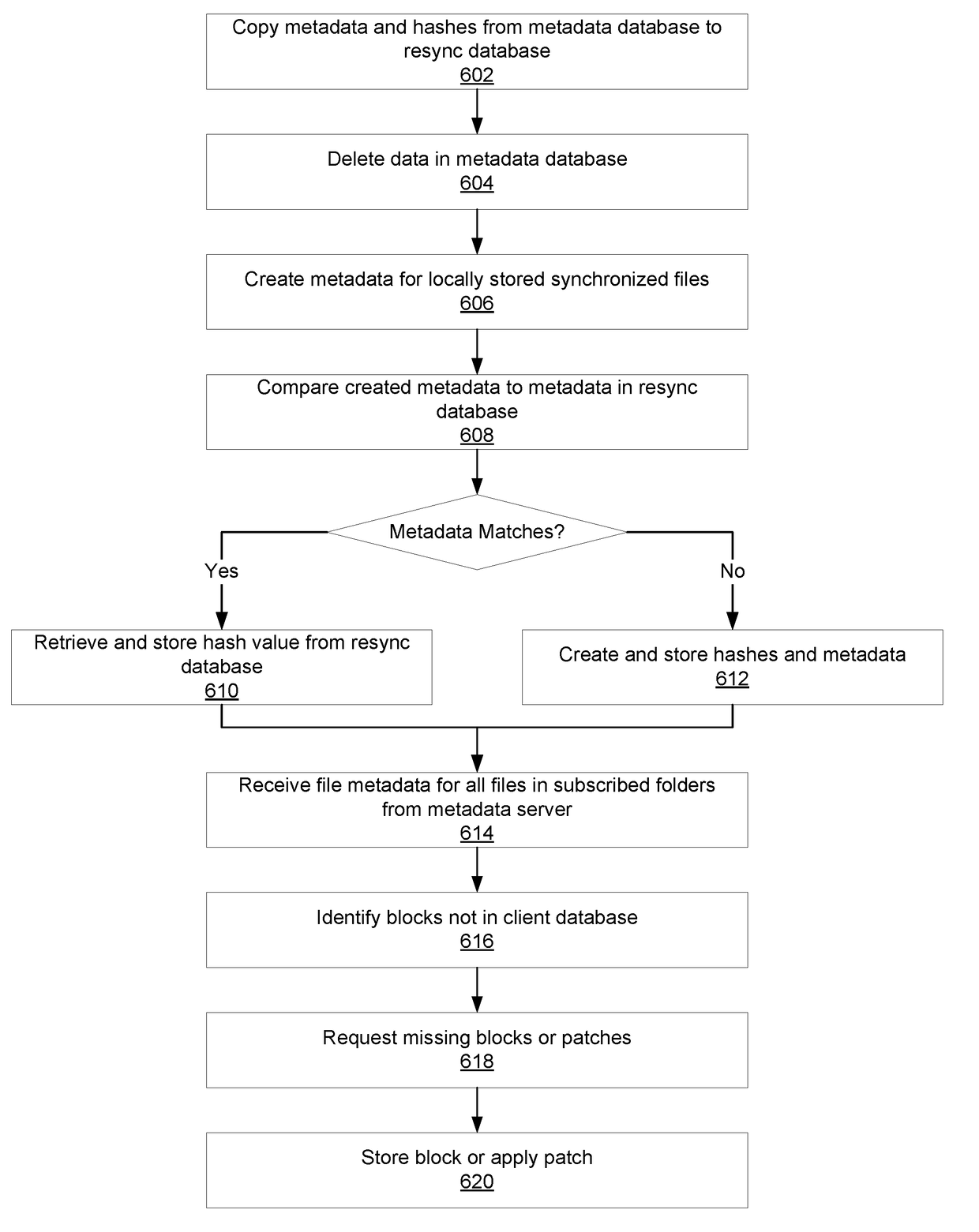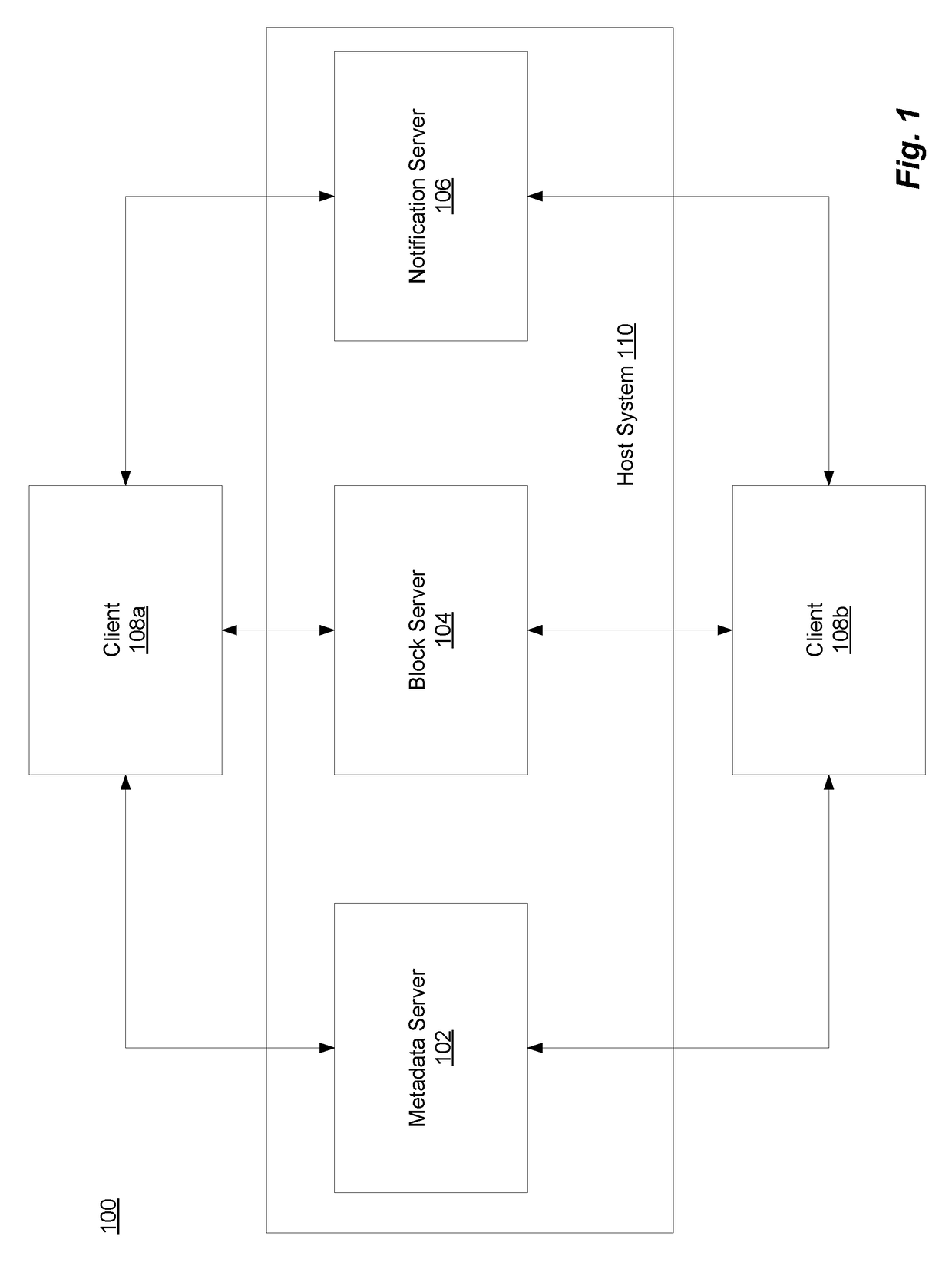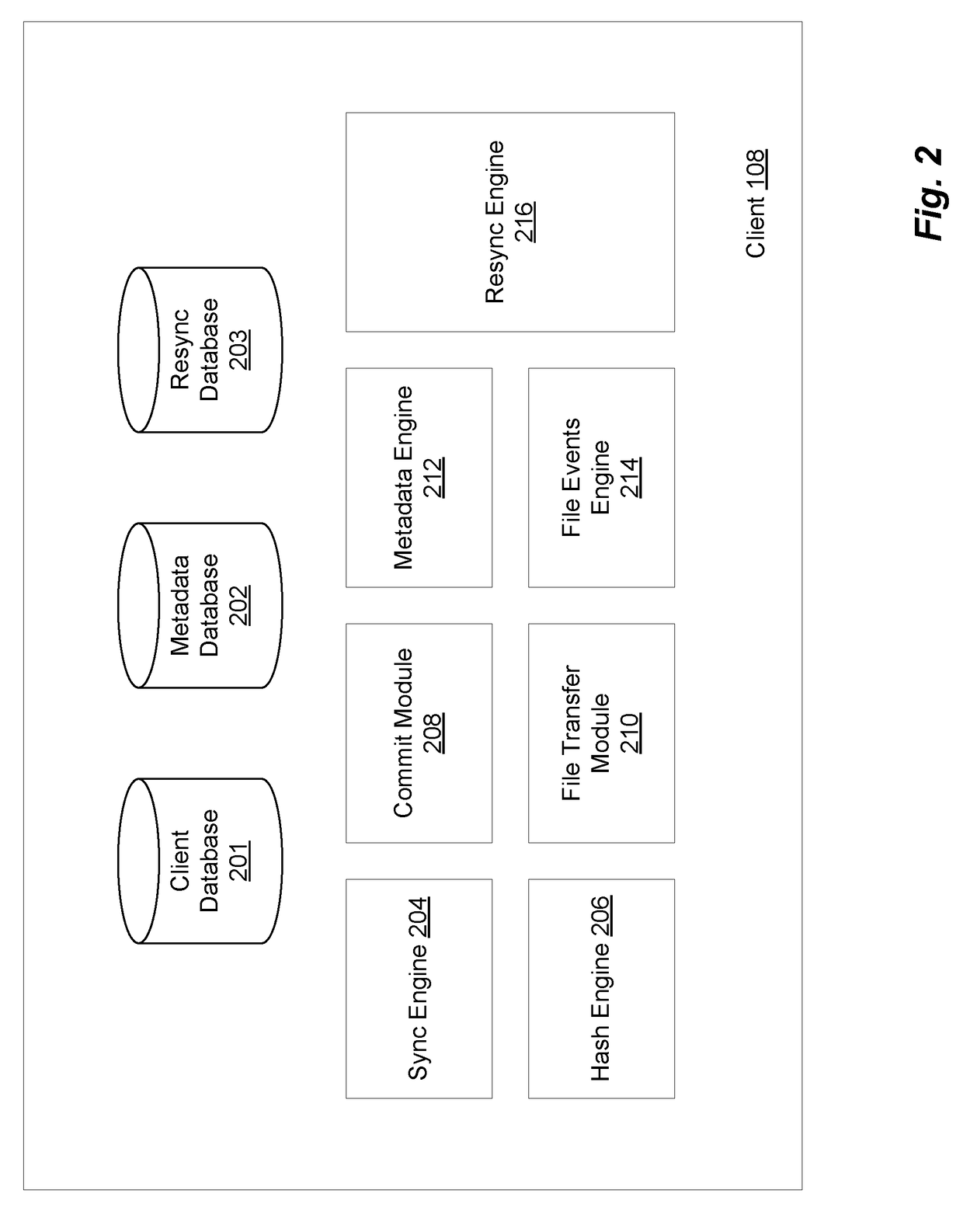Network folder resynchronization
a network folder and resynchronization technology, applied in the field of data sharing, can solve the problems of limiting the effectiveness of network folder synchronization, metadata database corruption, and inaccessibility of certain files or folders, so as to improve the overall function of file synchronization and user experience, reduce the number of client computing resources, and occur more quickly
- Summary
- Abstract
- Description
- Claims
- Application Information
AI Technical Summary
Benefits of technology
Problems solved by technology
Method used
Image
Examples
Embodiment Construction
[0017]System Architecture
[0018]FIG. 1 is a block diagram of an example computing environment 100 for maintaining synchronized shared folders in accordance with an embodiment of the present invention. Computing environment 100 includes host system 110 and clients 108a, 108b. Host system 110 includes metadata server 102; block server 104; and notification server 106.
[0019]Metadata server 102 receives requests from clients 108 to update the host system's copy of synchronized folders and provides clients 108 with a list of metadata for files being synchronized. Block server 104 receives, stores, and serves blocks of data constituting synchronized files. Notification server 106 provides updates to clients 108 when a synchronized folder has been updated on the server, and provides those notifications to the clients. The operation of each of these components is described further below.
[0020]Note that in various embodiments, sharing occurs at the folder level—that is, a folder and any files...
PUM
 Login to View More
Login to View More Abstract
Description
Claims
Application Information
 Login to View More
Login to View More - R&D
- Intellectual Property
- Life Sciences
- Materials
- Tech Scout
- Unparalleled Data Quality
- Higher Quality Content
- 60% Fewer Hallucinations
Browse by: Latest US Patents, China's latest patents, Technical Efficacy Thesaurus, Application Domain, Technology Topic, Popular Technical Reports.
© 2025 PatSnap. All rights reserved.Legal|Privacy policy|Modern Slavery Act Transparency Statement|Sitemap|About US| Contact US: help@patsnap.com



